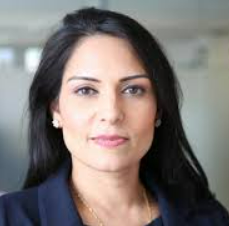
Charlie Brooks
Jul 21, 2022 10:59

Tesla (NASDAQ:TSLA) Inc reported a quarterly profit above analyst forecasts on Wednesday, as a series of price increases on its best-selling electric vehicles helped to overcome production challenges caused by COVID-19 lockdowns in China.
Elon Musk, the CEO of Tesla, claimed on a conference call that he expects inflation to begin declining by the end of the year and that Tesla has no demand issues.
Despite what he dubbed "embarrassingly expensive" vehicle prices, he rejected the claim that Tesla's popularity was affected by the global economic crisis. The price of the long-range form of Tesla's Model Y in the United States has grown by more than 30 percent since the beginning of 2021, to its current price of $65,990.
The company forecasted a "record-breaking second half" of the year and maintained its goal of a 50 percent average annual increase in vehicle deliveries over a multi-year period, but did not disclose specific delivery targets for 2022.
During after-hours trading, Tesla's shares increased by almost 1 percent. Since hitting a high point in November, the stock price has decreased by about 40 percent.
Tesla's China facility concluded the second quarter with a monthly production record. Musk added that new factories in Texas and Berlin were projected to produce 5,000 vehicles per week by the end of the year, with Berlin producing 1,000 vehicles per week in June.
Musk has previously referred to the proposed facilities as "gigantic money furnaces" and stated that he had a "bad feeling about the economy."
Following Tesla's earnings release, Morgan Stanley (NYSE:MS) wrote in a research, "We are prepared for near-term margin challenges due to (new) problems with scaling up additional production, particularly in Berlin."
Executives acknowledged a persistent lack of older-generation microchips, but maintained that there were no significant concerns with the supply of chips and batteries, barring unplanned COVID-related shutdowns.
The EV maker posted a quarterly adjusted profit of $2.27 per share, compared to the average estimate of $1.81 per share among industry experts.
Due to inflationary pressure, the company's automotive gross margin fell to 27.9 percent, down from the same time a year ago and the previous quarter.
Jesse Cohen, senior analyst at Investing.com, commented, "Tesla's outstanding quarter is the latest indicator that the firm has succeeded at handling global supply chain and logistical challenges, weathering the storm better than most conventional automakers."
Tesla reported that it has converted around 75% of its bitcoin acquisitions into fiat currency, increasing its cash position by $936 million. Musk indicated on the conference call that the sale was undertaken to increase cash since Tesla was unsure of how long the COVID-19 lockout in China would endure. Tesla has not sold any of its Dogecoin-related holdings.
"This should not be seen as a decision on bitcoin," he continued, adding that Tesla is open to increasing its cryptocurrency holdings in the future.
Musk claimed in May 2017 that Tesla had no plans to sell its bitcoin holdings.
"The bitcoin losses emphasize an essential part of Tesla's investment case: its eccentric owner. Laura Hoy, an analyst at Hargreaves Lansdown, claims that Musk's attitude is beginning to raise governance problems as a result of his company-benefiting innovation.
In the second quarter, overall sales dipped to $16.93 billion from $18.76 billion in the previous quarter, breaking Tesla's trend of posting record revenue in previous quarters.
Analysts projected a sales of $17.10 billion, according to data from IBES and Refinitiv.

Jul 21, 2022 10:56
